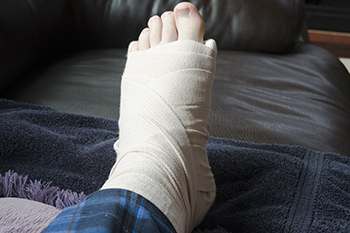 Plantar warts are common skin growths that appear on the soles of the feet. They are caused by exposure to the human papillomavirus, or HPV. These warts are often rough and spongy, and can be painful when pressure is applied while walking or standing. Plantar warts can be treated using a range of methods, depending on their size and severity. Salicylic acid, which gradually peels away the infected skin, may be used for mild cases. For more stubborn warts, a podiatrist may recommend cryotherapy, which uses liquid nitrogen to freeze and kill the wart tissue. Another effective method is laser treatment, where concentrated beams of light are used to destroy the wart. In some cases, minor surgical procedures might be necessary to remove the wart. Podiatrists, or foot doctors, are trained in the treatment of plantar warts. If you have plantar warts, it is suggested that you schedule an appointment with this type of doctor for effective solutions.
Plantar warts are common skin growths that appear on the soles of the feet. They are caused by exposure to the human papillomavirus, or HPV. These warts are often rough and spongy, and can be painful when pressure is applied while walking or standing. Plantar warts can be treated using a range of methods, depending on their size and severity. Salicylic acid, which gradually peels away the infected skin, may be used for mild cases. For more stubborn warts, a podiatrist may recommend cryotherapy, which uses liquid nitrogen to freeze and kill the wart tissue. Another effective method is laser treatment, where concentrated beams of light are used to destroy the wart. In some cases, minor surgical procedures might be necessary to remove the wart. Podiatrists, or foot doctors, are trained in the treatment of plantar warts. If you have plantar warts, it is suggested that you schedule an appointment with this type of doctor for effective solutions.
Plantar warts can be very uncomfortable. If you need your feet checked, contact one of our podiatrists from Graff Foot, Ankle and Wound Care. Our doctors will assist you with all of your foot and ankle needs.
About Plantar Warts
Plantar warts are the result of HPV, or human papillomavirus, getting into open wounds on the feet. They are mostly found on the heels or balls of the feet.
While plantar warts are generally harmless, those experiencing excessive pain or those suffering from diabetes or a compromised immune system require immediate medical care. Plantar warts are easily diagnosed, usually through scraping off a bit of rough skin or by getting a biopsy.
Symptoms
- Lesions on the bottom of your feet, usually rough and grainy
- Hard or thick callused spots
- Wart seeds, which are small clotted blood vessels that look like little black spots
- Pain, discomfort, or tenderness of your feet when walking or standing
Treatment
- Freezing
- Electric tool removal
- Laser Treatment
- Topical Creams (prescription only)
- Over-the-counter medications
To help prevent developing plantar warts, avoid walking barefoot over abrasive surfaces that can cause cuts or wounds for HPV to get into. Avoiding direct contact with other warts, as well as not picking or rubbing existing warts, can help prevent the further spread of plantar warts. However, if you think you have developed plantar warts, speak to your podiatrist. He or she can diagnose the warts on your feet and recommend the appropriate treatment options.
If you have any questions please feel free to contact our offices located in Plano, Dallas, Prosper, Allen, Irving, Garland, Frisco, and Coppell, TX . We offer the newest diagnostic and treatment technologies for all your foot and ankle needs.
 Plantar heel pain
Plantar heel pain


 Fractures of the foot
Fractures of the foot